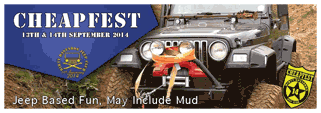
- December 16, 2025, 09:18:55 AM
- Welcome, Guest
- Birty Dastards Jeep Club >
- Forum >
- Tech Forum >
- Workshop >
- Topic: Wheel Hub-Bearing Bolt - Socket Size?
|
Pages: [1] Go Down
|
Powered by EzPortal


|
Pages: [1] Go Down
|